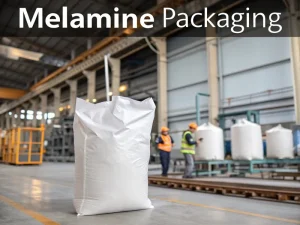
Melamine Packaging
Tech Blog Melamine packaging For manufacturers, inaccurate packaging not only fails to meet national standards but also increases labor costs and the risk of product

Urea and ethanol are two extremely common chemicals in both laboratory and industrial settings. A question that frequently arises: What is the solubility of urea in ethanol?
The short answer is: Urea does dissolve in ethanol, but its solubility is significantly lower than its solubility in water. This “moderate” or “limited” solubility is influenced by several factors, the most critical of which is temperature.
This guide will delve deep into the solubility of urea in ethanol, providing specific data, explaining the science behind it, and outlining its significance in practical applications.
To accurately understand its solubility, we need to look at specific data. The solubility of urea in ethanol is typically expressed in “grams per 100 mL” or “grams per 100 g.” While data may vary slightly between different literature sources, the overall trend is consistent.
Here is a data table, compiled from multiple sources, showing the solubility of urea in absolute ethanol as a function of temperature:
Temperature (°C) | Solubility (g / 100 g of ethanol) |
10 | ~4.0 |
20 | ~5.4 |
25 | ~6.5 |
30 | ~7.8 |
40 | ~11.0 |
60 | ~22.0 |
Key Takeaways:
To better contextualize the data above, we must compare it to the solubility of urea in water. Urea is extremely soluble in water:
At 20°C, approximately 108 grams of urea can dissolve in 100 grams of water.
The conclusion is stark: Urea is roughly 15 to 20 times more soluble in water than it is in ethanol.
The answer lies in molecular polarity and hydrogen bonding.
1.Polarity: Water (H₂O) is a strongly polar solvent, while ethanol (C₂H₅OH) is less polar. Urea (CO(NH₂)₂) is itself a polar molecule. According to the “like dissolves like” principle, polar solutes dissolve more readily in more polar solvents.
2.Hydrogen Bonding: The oxygen and nitrogen atoms in a urea molecule can act as hydrogen bond acceptors, while the hydrogen atoms on its amino groups (-NH₂) can act as hydrogen bond donors. Water molecules can form a very strong and dense network of hydrogen bonds with urea, effectively pulling it into solution. While ethanol can also form hydrogen bonds with urea, the presence of its non-polar ethyl group (-C₂H₅) makes this interaction much less strong and efficient than that of water.
Temperature (The Main Factor): As the data shows, heating is the most effective way to increase the solubility of urea in ethanol. This is an endothermic dissolution process, so increasing the temperature shifts the equilibrium towards dissolution.
Purity of Ethanol (Water Content): This is a very important practical consideration. The data above is for absolute (anhydrous) ethanol. If you are using common 95% ethanol (which contains 5% water), the solubility of urea will be significantly higher.
Agitation and Particle Size: Agitation can increase the dissolution rate, while reducing the particle size of urea can also increase the dissolution rate, but it will not change the final solubility (the maximum amount that can be dissolved at a specific temperature).
Given its limited solubility in ethanol, why do we care about this topic? Because this specific solubility has practical applications in several fields:
In summary, urea is soluble in ethanol, but its solubility is limited and significantly lower than in water. Its solubility is highly sensitive to temperature, and heating can substantially increase the amount that can be dissolved.
Understanding this property is not just a fundamental chemistry concept; it is a practical foundation for product development and scientific research in fields like cosmetics, pharmaceuticals, and chemical synthesis. By precisely controlling temperature and solvent purity, researchers and formulators can effectively leverage the solubility behavior of urea in ethanol to achieve their specific goals.

Tech Blog Melamine packaging For manufacturers, inaccurate packaging not only fails to meet national standards but also increases labor costs and the risk of product

Tech Blog How to Detect Melamine in Textiles? Melamine powder, a nitrogen-containing heterocyclic compound, is widely used in flame-retardant textiles and plastic products due to

Tech Blog urea vs anhydrous ammonia Nitrogen is the “lifeline” of crop growth, directly affecting leaf development, photosynthetic efficiency, and yield potential. For global farmers,

JINGJIANG MELAMINE POWDER
© JINJIANG MELAMINE